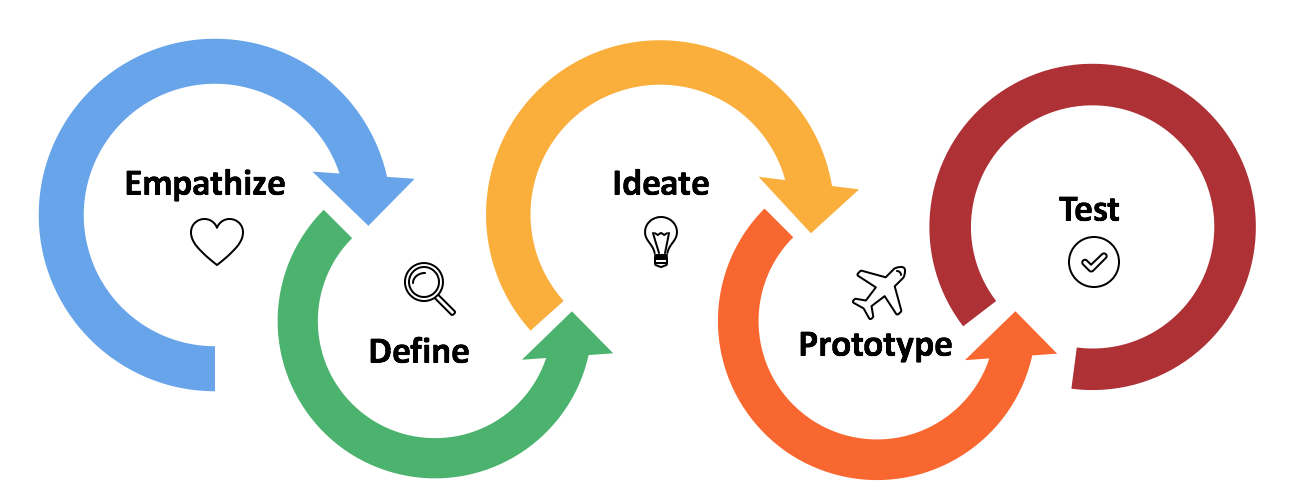User-Centered Design: How UX/UI Shapes a Memorable Brand Experience

In today's highly competitive digital landscape, where users are flooded with options, the experience you offer them can make or break their perception of your brand. For startups, especially those launching a new mobile app, creating a website that offers a seamless and user-friendly experience is critical to attracting and retaining users. The interface design of a website and mobile app directly influences how users perceive your brand and how likely they are to engage with your product.
This is where User-Centered Design (UCD) comes into play. UCD is a design philosophy that focuses on the needs, preferences, and behaviors of the user. It's a process of designing and building websites and applications that prioritize user needs and create meaningful, lasting experiences. When applied to UX/UI design, UCD ensures that your website and app are not only functional but also delightful, intuitive, and aligned with your company’s brand values.
In this article, we’ll explore how a well-executed UX/UI design, based on user-centered principles, can help shape a memorable brand experience for a startup. We'll dive into the importance of design for new mobile apps and how to create a website that resonates with potential users, boosting brand recognition, user satisfaction, and ultimately, conversion.

Why User-Centered Design Matters for Startups
For a startup offering a new mobile app, your website plays a pivotal role in user acquisition. The website is often the first point of contact with your potential users, and its design must clearly convey your brand’s mission, values, and usability. However, more importantly, it must resonate with the people who will ultimately use your product.
Startups face the challenge of creating brand recognition in a crowded market. When people first visit your website, they may not be familiar with your product or brand. The website's design must immediately convey professionalism, simplicity, and trustworthiness. A website built with user-centered design principles is much more likely to deliver a positive experience that encourages users to sign up, download your app, or explore your offerings.
1. Building Trust with a User-Friendly Website
Trust is one of the most valuable assets for any startup. Users are more likely to trust a company with a well-designed, easy-to-navigate, and intuitive website. In the mobile app market, users have high expectations for a seamless experience across all platforms. If your website is cluttered, difficult to navigate, or does not reflect your app’s core features and benefits clearly, users will be less likely to take the next step and download your app.
User-Centered Design in Action:
-
Clear Messaging: Your website should clearly convey what your app does and how it benefits the user. If a user lands on your homepage and doesn't understand your app’s value immediately, they’re more likely to leave. The messaging must be simple, concise, and tailored to your target audience.
-
Simple Navigation: Design your website’s navigation to be as intuitive as possible. Users should not have to search for information. Make sure key actions, such as downloading your app or signing up, are clearly visible and easily accessible.
-
Mobile-First Approach: Many users will be visiting your website from a mobile device, especially for an app-based startup. Ensure that your website is fully responsive and optimized for mobile, offering the same seamless experience users will get from your app.
2. Aligning the Website with Your Brand’s Values
Your website is an extension of your app and brand. It should embody the personality, mission, and vision of your startup. The look and feel of the website must be aligned with your app's design so that users have a consistent experience across all touchpoints.
User-Centered Design in Action:
-
Consistent Visual Language: Use the same color schemes, fonts, icons, and design elements across both your app and website. This creates a cohesive and professional visual identity that reinforces brand recognition.
-
Storytelling: Through thoughtful design, you can tell the story of your brand. Use visual storytelling, such as images, animations, and videos, to highlight the features and benefits of your app. This helps build an emotional connection with your users.
-
User-Centric Copywriting: Write copy that speaks directly to your target audience. Understand their pain points, desires, and motivations, and tailor your language to resonate with them. Your website copy should reflect the language and tone of your app, creating a consistent voice for your brand.
3. Improving Engagement and Retention with Intuitive Interactions
For a startup offering a mobile app, the goal is not just to get users to download your app but to engage them consistently. A user-friendly website with a seamless UX/UI design can increase engagement and help retain users by making the journey from your website to your app as easy as possible.
User-Centered Design in Action:
-
Smooth Onboarding Process: The transition from website to app should be smooth. Offer clear calls to action that guide users toward downloading the app. Use eye-catching buttons and simple language to lead users to the app store for a quick download.
-
Minimal Steps: When users visit your website, they should not have to jump through hoops to get the information they need. Make it easy for them to sign up for your app, access your blog, or contact your support team without unnecessary friction. The fewer the steps, the more likely users are to take action.
-
Interactive Features: Add interactive elements like live chat, app demos, or an interactive FAQ section to engage users and provide real-time assistance. These features not only improve the user experience but also help resolve any questions or concerns potential users might have before downloading your app.
4. Gathering User Feedback for Continuous Improvement
User-centered design is not a one-time effort; it’s an ongoing process. As a startup, you need to listen to your users and use their feedback to continuously refine your website and app. The best way to improve the user experience is to involve the users in the process. By gathering feedback, you can make informed decisions about the future of your app and website.
User-Centered Design in Action:
-
User Surveys: Implement short, non-intrusive surveys on your website to gather feedback on the user experience. Ask users about their pain points and suggestions for improvement. Make it easy for them to provide insights.
-
Usability Testing: Conduct usability tests to see how real users interact with your website. Identify any stumbling blocks in the user journey and fix them to improve engagement.
-
Iterative Design: Based on feedback and testing, refine your website’s design regularly. Implement small improvements that gradually enhance the overall user experience. This ensures your website always meets user needs and expectations.
5. Creating a Memorable First Impression
For startups, the first impression is crucial. Users will decide within seconds whether they want to stay on your website or leave. A memorable UX/UI design can be the key to retaining users, building brand loyalty, and increasing conversions.
User-Centered Design in Action:
-
Fast Load Times: Users expect websites to load quickly, especially when visiting them from mobile devices. A slow website can turn potential customers away before they even see what your app has to offer. Optimize images, minimize redirects, and compress files to ensure fast load times.
-
Visual Appeal: Use attractive design elements, including high-quality images, intuitive icons, and modern typography, to create a visually appealing website. This sets the tone for the app’s design and gives users a taste of the experience they will have after downloading the app.
-
Call-to-Action (CTA): Use clear, persuasive CTAs to guide users to take the next step—whether it’s downloading the app, subscribing to your newsletter, or exploring more about your services. Make sure your CTA buttons stand out and lead users to the desired action.
Conclusion: UX/UI Design as the Cornerstone of a Memorable Brand Experience
For a startup offering a new mobile app, your website is often the first point of contact with potential users. User-centered UX/UI design plays a vital role in creating a seamless, user-friendly experience that reflects your brand’s values and builds trust. By designing a website that is easy to navigate, visually appealing, and aligned with the app’s functionality, you can create a memorable first impression and foster user engagement.
When you focus on the needs, preferences, and behaviors of your users, you lay the foundation for a successful, lasting relationship with them. Through continuous improvement based on user feedback and iterative design, your website can evolve alongside your app, providing an exceptional experience for users and supporting the growth of your startup. By adopting a user-centered design approach, you not only improve the user experience but also ensure the success of your brand in a crowded marketplace.


Subscribe to follow product news, latest in technology, solutions, and updates
บทความอื่นๆ



Let’s build digital products that are simply awesome !
We will get back to you within 24 hours!ติดต่อเรา Please tell us your ideas.
Please tell us your ideas.







